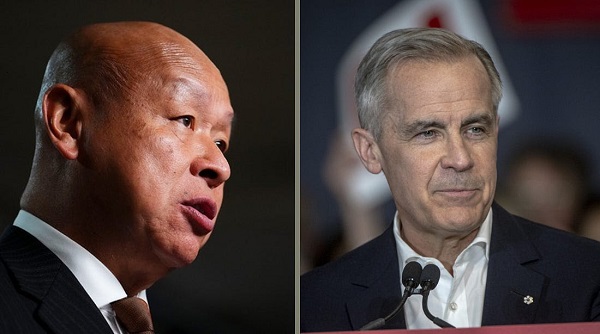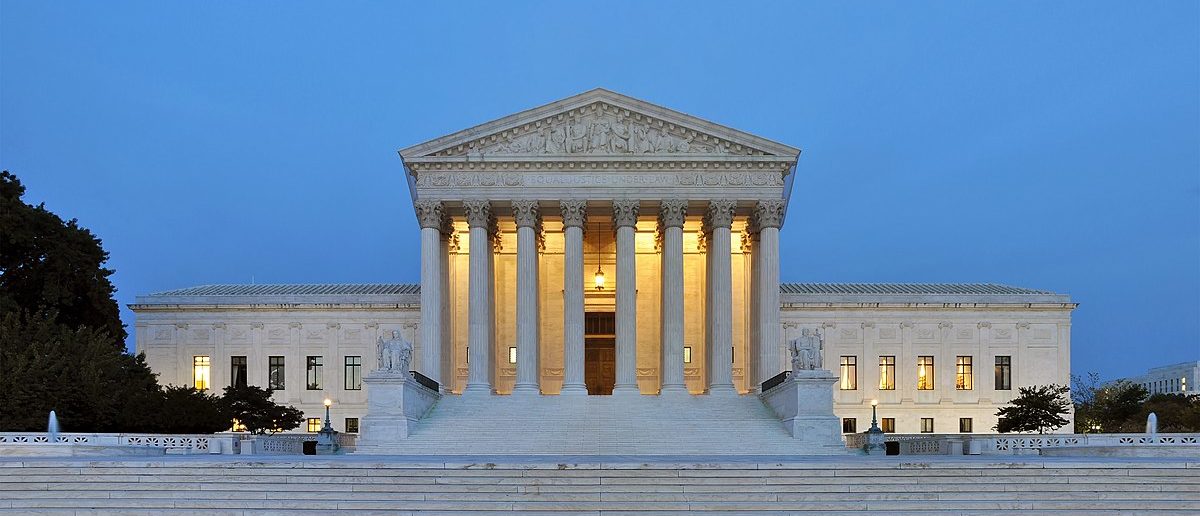Uncategorized
California floods recede after storms in wildfire burn areas

SAN FRANCISCO — After fleeing a wildfire that came dangerously close to his Northern California home earlier this month, Dale Word evacuated again when flash floods inundated roads and trapped motorists and residents.
Swift water teams used boats to make rescues at three homes and officials told people in about 100 vehicles to stay in place. The rain receded late Thursday afternoon, leaving a mess of sticky mud and debris. Downed trees and power poles littered the landscape.
Word, a firmware engineer, waded through thigh-high water to higher ground in his semi-rural Chico
“Everywhere you go you’re talking to people who have lost everything and it’s just tragic,” Word said. He jokingly added, “It feels like the Four Horsemen of the Apocalypse are going to come riding over the hill any day now.”
Thursday’s storm brought 1
The sheriff’s department ordered evacuations but could not say how many people were affected. The water rescues were in Chico, where many of the fire evacuees from Paradise are staying.
Paradise has been under mandatory evacuation orders for nearly three weeks since the firestorm killed at least 88 people and destroyed nearly 14,000 homes.
Residents could begin returning early next week, but only if the wet weather doesn’t hinder efforts to clear roads and restore power, Sheriff Kory Honea said Wednesday.
In Southern California, authorities ordered evacuations in a small Malibu community within a wildfire burn zone where a mudslide blocked streets amid the heavy rains. No major damage was reported by the time flood warnings and watches expired.
The storm knocked out power and flooded roadways across greater Los Angeles. Numerous traffic accidents occurred on slick freeways and most vehicles
Residents were urged to voluntarily evacuate a string of
West of Los Angeles, no major problems were reported after rain fell heavily at times in vast areas burned by fires this month and last December — an area where there are strong memories of a January downpour that unleashed devastating debris flows through the community of Montecito that killed 21 people and left two missing.
On the coast near Big Sur, the California Department of Transportation closed a 12-mile (
The weather service also issued a backcountry avalanche warning for most of the central Sierra, including the Lake Tahoe area.
___
Associated Press writers Janie Har, Jocelyn Gecker and Juliet Linderman in San Francisco, Christopher Weber and John Antczak in Los Angeles, and Scott Sonner in Reno, Nevada contributed to this report.
Olga R. Rodriguez, The Associated Press
Uncategorized
Kananaskis G7 meeting the right setting for U.S. and Canada to reassert energy ties


Energy security, resilience and affordability have long been protected by a continentally integrated energy sector.
The G7 summit in Kananaskis, Alberta, offers a key platform to reassert how North American energy cooperation has made the U.S. and Canada stronger, according to a joint statement from The Heritage Foundation, the foremost American conservative think tank, and MEI, a pan-Canadian research and educational policy organization.
“Energy cooperation between Canada, Mexico and the United States is vital for the Western World’s energy security,” says Diana Furchtgott-Roth, director of the Center for Energy, Climate and Environment and the Herbert and Joyce Morgan Fellow at the Heritage Foundation, and one of America’s most prominent energy experts. “Both President Trump and Prime Minister Carney share energy as a key priority for their respective administrations.
She added, “The G7 should embrace energy abundance by cooperating and committing to a rapid expansion of energy infrastructure. Members should commit to streamlined permitting, including a one-stop shop permitting and environmental review process, to unleash the capital investment necessary to make energy abundance a reality.”
North America’s energy industry is continentally integrated, benefitting from a blend of U.S. light crude oil and Mexican and Canadian heavy crude oil that keeps the continent’s refineries running smoothly.
Each day, Canada exports 2.8 million barrels of oil to the United States.
These get refined into gasoline, diesel and other higher value-added products that furnish the U.S. market with reliable and affordable energy, as well as exported to other countries, including some 780,000 barrels per day of finished products that get exported to Canada and 1.08 million barrels per day to Mexico.
A similar situation occurs with natural gas, where Canada ships 8.7 billion cubic feet of natural gas per day to the United States through a continental network of pipelines.
This gets consumed by U.S. households, as well as transformed into liquefied natural gas products, of which the United States exports 11.5 billion cubic feet per day, mostly from ports in Louisiana, Texas and Maryland.
“The abundance and complementarity of Canada and the United States’ energy resources have made both nations more prosperous and more secure in their supply,” says Daniel Dufort, president and CEO of the MEI. “Both countries stand to reduce dependence on Chinese and Russian energy by expanding their pipeline networks – the United States to the East and Canada to the West – to supply their European and Asian allies in an increasingly turbulent world.”
Under this scenario, Europe would buy more high-value light oil from the U.S., whose domestic needs would be back-stopped by lower-priced heavy oil imports from Canada, whereas Asia would consume more LNG from Canada, diminishing China and Russia’s economic and strategic leverage over it.
* * *
The MEI is an independent public policy think tank with offices in Montreal, Ottawa, and Calgary. Through its publications, media appearances, and advisory services to policymakers, the MEI stimulates public policy debate and reforms based on sound economics and entrepreneurship.
As the nation’s largest, most broadly supported conservative research and educational institution, The Heritage Foundation has been leading the American conservative movement since our founding in 1973. The Heritage Foundation reaches more than 10 million members, advocates, and concerned Americans every day with information on critical issues facing America.
Uncategorized
Poilievre on 2025 Election Interference – Carney sill hasn’t fired Liberal MP in Chinese election interference scandal

From Conservative Party Communications
“Yes. He must be disqualified. I find it incredible that Mark Carney would allow someone to run for his party that called for a Canadian citizen to be handed over to a foreign government on a bounty, a foreign government that would almost certainly execute that Canadian citizen.
“Think about that for a second. We have a Liberal MP saying that a Canadian citizen should be handed over to a foreign dictatorship to get a bounty so that that citizen could be murdered. And Mark Carney says he should stay on as a candidate. What does that say about whether Mark Carney would protect Canadians?
“Mark Carney is deeply conflicted. Just in November, he went to Beijing and secured a quarter-billion-dollar loan for his company from a state-owned Chinese bank. He’s deeply compromised, and he will never stand up for Canada against any foreign regime. It is another reason why Mr. Carney must show us all his assets, all the money he owes, all the money that his companies owe to foreign hostile regimes. And this story might not be entirely the story of the bounty, and a Liberal MP calling for a Canadian to be handed over for execution to a foreign government might not be something that the everyday Canadian can relate to because it’s so outrageous. But I ask you this, if Mark Carney would allow his Liberal MP to make a comment like this, when would he ever protect Canada or Canadians against foreign hostility?
“He has never put Canada first, and that’s why we cannot have a fourth Liberal term. After the Lost Liberal Decade, our country is a playground for foreign interference. Our economy is weaker than ever before. Our people more divided. We need a change to put Canada first with a new government that will stand up for the security and economy of our citizens and take back control of our destiny. Let’s bring it home.”
-

 espionage17 hours ago
espionage17 hours agoFrom Sidewinder to P.E.I.: Are Canada’s Political Elites Benefiting from Beijing’s Real Estate Reach?
-

 conflict2 days ago
conflict2 days agoTrump dismisses US intelligence that Iran wasn’t pursuing nuclear bomb before Israeli attack
-

 Censorship Industrial Complex2 days ago
Censorship Industrial Complex2 days agoJordan Peterson reveals DEI ‘expert’ serving as his ‘re-education coach’ for opposing LGBT agenda
-

 Alberta2 days ago
Alberta2 days agoUnified message for Ottawa: Premier Danielle Smith and Premier Scott Moe call for change to federal policies
-

 Business1 day ago
Business1 day agoCanada’s critical minerals are key to negotiating with Trump
-

 Business1 day ago
Business1 day agoRFK Jr. planning new restrictions on drug advertising: report
-

 Education2 days ago
Education2 days agoStudents can’t use AI to cheat on standardized tests
-

 Daily Caller21 hours ago
Daily Caller21 hours agoUnanimous Supreme Court Ruling Inspires Hope For Future Energy Project Permitting






